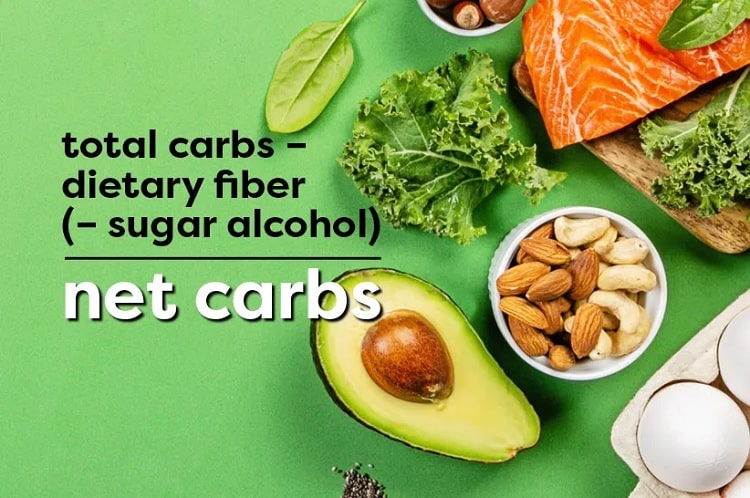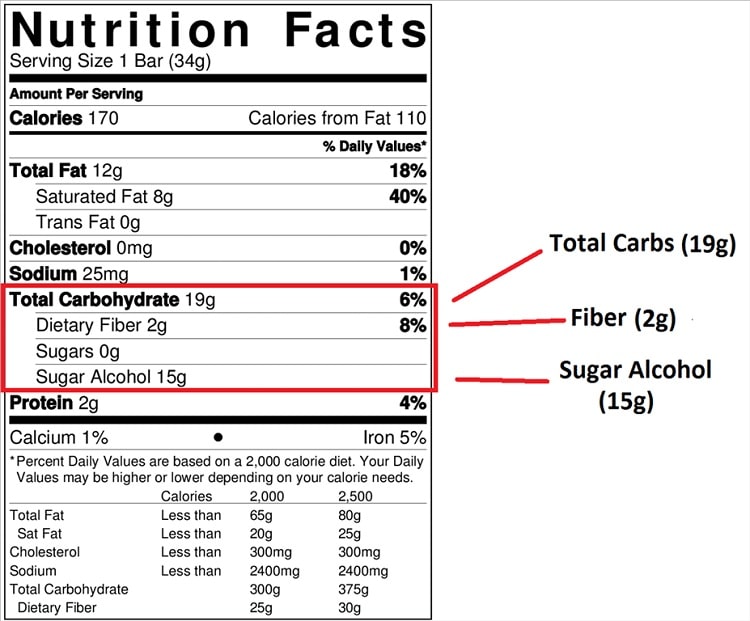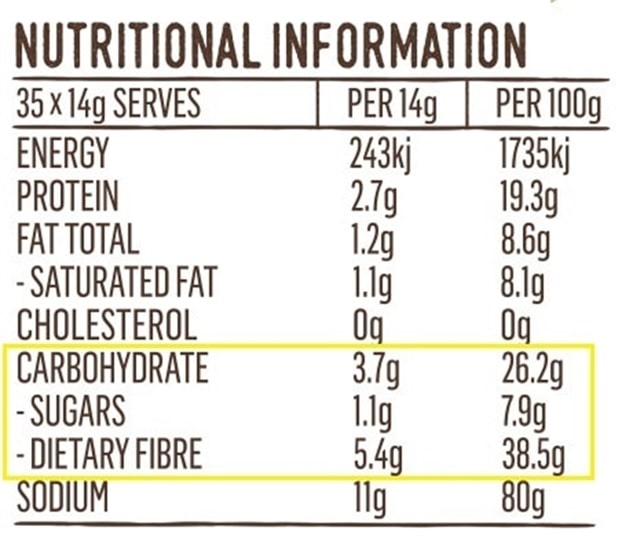How To Easily Calculate Net Carbs On A Keto Diet
You are well aware that keto is a very low-carb, high-fat way of eating that aids rapid and efficient weight loss.
You can determine how many carbohydrates you consume daily on the keto diet, but did you realise that not all carbohydrates are created equal? Because they affect insulin levels, net carbohydrates are essential. Turning off your insulin switch is the first step to using fat as fuel rather than carbohydrates.
When you initially begin a keto diet, calculating net carb might be a bit perplexing, but with experience, it becomes easier. The number of carbohydrates your body really absorbs may not match the net carbohydrate statements on packaged goods. If you want to lose weight, work on your health, or improve your fitness, it’s helpful to understand how your body absorbs various forms of carbohydrates as well as what net carbohydrates are. Here’s everything you know about figuring out net carb when on a keto.
So let’s begin with what net carbs are
The term “net carbs” may also refer to simple and complex carbohydrates that our systems may break down and convert to glucose. Fruits, vegetables, honey, and other foods include simple carbohydrates. Simple carbohydrates consist of one or two linked sugar units.
Starchy foods like rice and pasta are both sources of complex carbohydrates. Multiple sugar molecules are bonded together within complex carbohydrates.
Your body can only absorb the sugar in distinct elements. Most of the carbohydrates in a food majority of the carbohydrates in a food that you eat are broken down into separate sugar molecules by enzymes secreted in your small intestine. Some carbohydrates, including sugar alcohols and fibre, can only be partially digested and absorbed, while others, like starches, cannot be separated into individual sugars.
Because of this, most fibre and sugar alcohols may be subtracted from your overall carb count when calculating net carb. Compared to digestible carbohydrates, your body reacts differently to sugar, alcohol and fibre.

Understanding active, non-active and total carbs
Carbohydrates that the body really digests are called active carbs, sometimes called digestible carbs. These carbohydrates raise blood sugar levels because of their higher glycemic index. Starch and sugar are two examples of them.
Non-active carbs, also known as non-impact carbs, are not digested or converted into blood sugar. These carbs come in the form of fibre and sugar alcohol.
Total carb is basically the total amount of carbohydrates on a nutrition label. This comprises all the various carbohydrate sources included in a dish or meal, such as starches, dietary fibre, and sugar.
Difference between total carbs and net carbs
The quantity of “net carbohydrates” in your food is the most crucial factor to take into account for individuals following the ketogenic diet. This figure may differ significantly from the overall quantity of carbohydrates: The carbohydrates absorbed by your body are called net carbs. The daily intake of net carbohydrates does not include some forms of carbohydrates, such as fibre and sugar alcohols, because they are not digested into the blood.
You are only permitted to consume 50 grammes of net carbohydrates daily following the ketogenic diet; the less, the better. You will not be depriving your body of the necessary fibre it requires for healthy functioning, though, if you concentrate on “net” instead of “total” carbs. To ensure that you can constantly keep tabs on your intake of net carbs, try preparing your meals beforehand.
Calculating keto net carbs
Of course, several internet databases provide information on a food’s net carbs. You will occasionally need to solve it by yourself. Fortunately, it’s pretty easy to calculate. Follow these two easy steps and check the labels of the food to see how many net carbs are present:
- Look at the overall quantity of carbs, the amount of fibre and any artificial sweeteners like Erythritol to estimate the carbs. “Total carb” is determined by adding these items together. (Any sugar displayed is already factored into the overall quantity of carbs.)
- Subtract half of the sugar and the quantity of dietary fibre from the total carbs. The amount of net carbs in the food item is the result.

Consider an example:
Total Carbs – Dietary Fibre – Sugar = Net Carbs
22.2g – 14.1g – 0.3g = 7.8g of net carbs
Your net carb intake will always be the total quantity of carbs at most. Remember that a keto diet allows for 50g of net carb daily.
As a general rule, if total carbohydrates minus fibre equals far less than zero, the fibre amount was already deducted from total carbs. The number of carbs shown on the label is also your net carb. See the example of “negative net carbohydrates” in 3rd image below.

The amount of carbs (26.2 g per 100 g) shown in the picture above is also the net carbs because there are no negative net carbs.
Overall, it’s essential to read the label thoroughly. It can differ depending on where you reside, whether the producers are domestic or foreign, and if the items are produced locally or imported. If in doubt, examine additional labels from different producers of comparable items or conduct your study.
Foods you can eat on a keto diet
You don’t have to figure out your keto net carbohydrates for every meal just because you know how to do it now. On the keto diet, various delectable, healthy foods are highly recommended.
Seafood like tuna, salmon, sardines, cod, veggies like iceberg lettuce, broccoli, asparagus, cottage cheese, eggs, avocados, nuts, seeds, greek yoghurt, unsweetened coffee and tea, etc., are some low-carb, keto-friendly foods that are appropriate to eat when you’re following keto.
Some facts about carbs on keto
It’s vital to remember that the idea of net carbohydrates is not a recognised value. The only nutrient value is the total carb count, divided into sugar and dietary fibre.
Food producers created this new category of carbohydrates, such as net carbs and total carbs, to capitalise on the low-carb movement by positioning items with higher total carb counts as low-carb keto-friendly alternatives. The foundation of several popular diets today is that cutting back on carbohydrates offers several health advantages. In scientific research, low-carb diets are valuable, healthful, and advantageous.
Low-carb dieters are promised a wider variety of dietary alternatives, including sweet, dessert-like snacks and meals without adverse effects. The most popular indigestible carbohydrates that add sweetness are sugar alcohols, which include sorbitol, xylitol, erythritol, etc. These altered alcohol molecules resemble conventional sugar’s sweetness. Despite having a somewhat different molecular structures, they share a sweet flavour.
Although their impact on the body and blood sugar levels is not fully understood, sugar alcohols may have specific adverse effects. Some sugar alcohols may cause an increase in blood sugar.
However, it’s not all that bad. Here is a list of the low-carb and keto diets’ scientifically-backed health advantages.
- Low-carb diets may decrease your appetite with daily carb limits. According to studies, persons who consume more fat and protein and fewer carbohydrates experience longer-lasting satiety and consume fewer calories overall.
- Low-carb diets might initially result in quick weight reduction. Low-carb diets have a faster rate of weight reduction than low-fat diets.
- Diabetics or glucose intolerant can also benefit from low-carb and ketogenic diets.
- Reducing carbohydrate intake can help with diabetes management because different types of carbs have other effects on insulin levels.
Conclusion
To sum it up:
The majority of net carbs are sugars and starches. The carbs your body produces and uses as fuel are known as net carbs.
For keto, fibre and sugar alcohols don’t count as net carbs.
Since several other sugar substitutes can at least increase insulin and blood sugar, erythritol is the best option for net carbs.
Adding the fibre to the total carb number will yield the net carbs in naturally whole meals.
Subtract the fibre and half of the carbs from added sugar to get the net carbs in packaged meals.
Those who follow a low-carb lifestyle may benefit from increasing their fibre intake using net carbs calculations. Fibre has been linked to higher satiety and lower blood sugar levels. Calculating net carbs can be especially beneficial for people attempting to reduce weight, those with sugar level issues, and those with specific medical problems.
Because of the various impacts of processing on fibre and other factors and variables, it is not completely precise and brutal to calculate net carbs with exact precision. For some people, calculating all carbs makes it simpler to control blood sugar.
Whether you want to count total, net, or no carbohydrates is ultimately up to you.
Frequently Asked Questions
The carbohydrates in meals you can digest and utilise for energy are known as “net carbs”.
To determine net carbs, subtract fibre and sugar alcohols from the total carbs of the food item. Net carbohydrates are calculated as follows: total carbs minus fibre minus half of the carbs from sugar.
No, fibre is not counted against the overall carbs since it cannot be digested.






